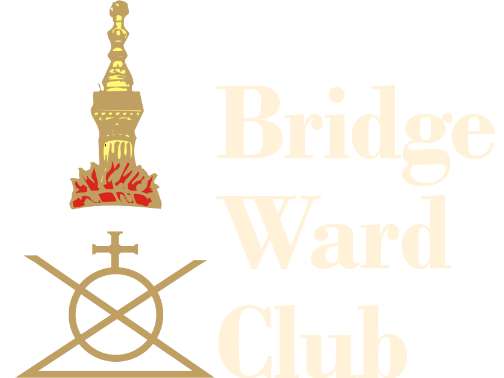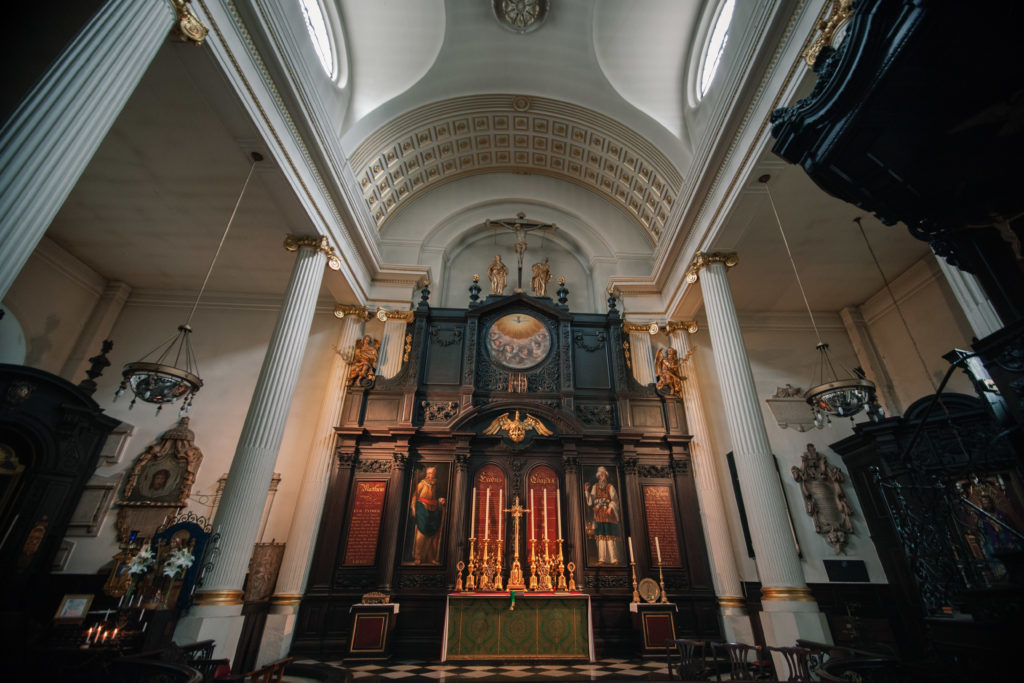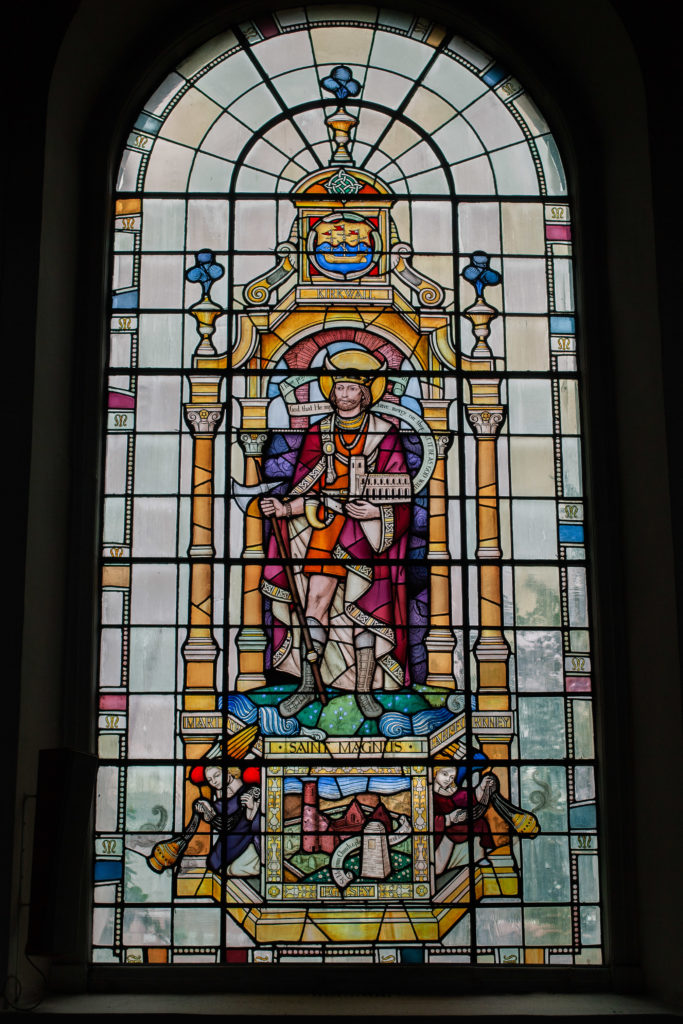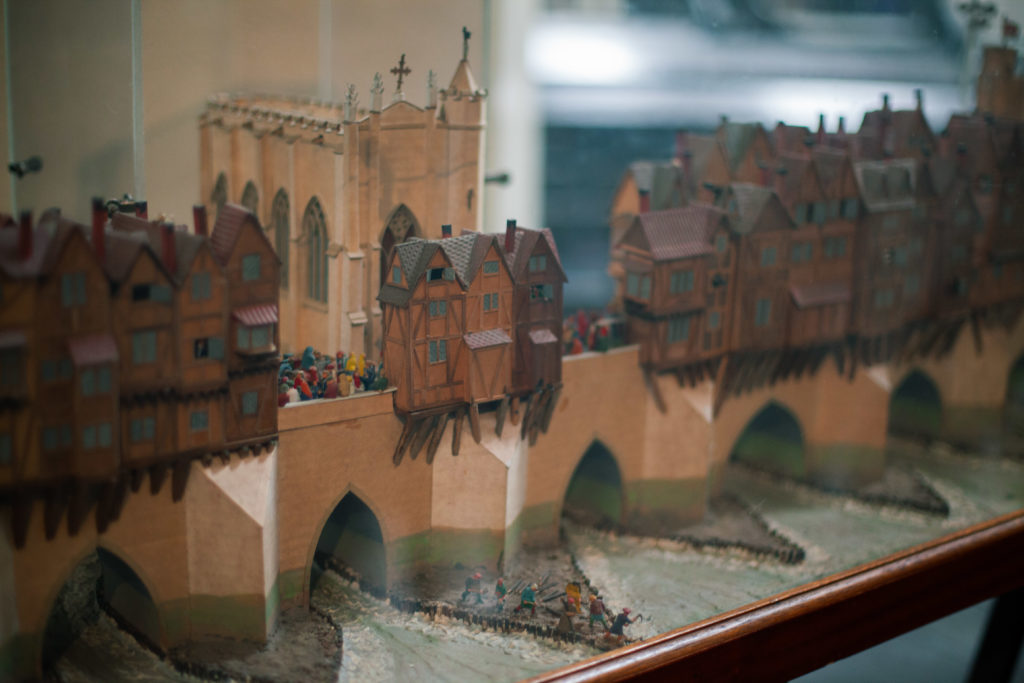Ward Walk
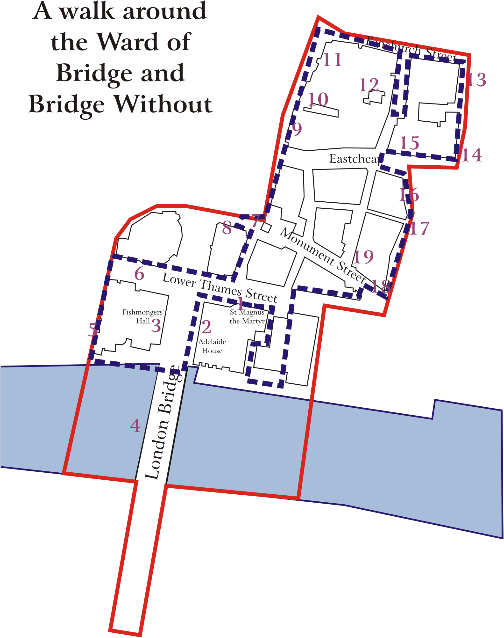
A walk in and around Bridge Ward
Starting and finishing point: St Magnus the Martyr
Time: Approximately 1 hour
Start your walk at St Magnus the Martyr (1) designed by Sir Christopher Wren in 1671-76 after the Great Fire of London in 1666. A church is first mentioned on this site in 1067. It is dedicated to the Norwegian Earl of Orkneys, killed by his cousin Haakon in 1116. Note in the porch to the church, old parish boundary marks of various local churches and the rather decrepit piece of timber from the old Roman quayside. In the forecourt are pieces of stone from the famous mediaeval London Bridge and Sir John Rennie’s bridge opened in 1831.
Leave the forecourt and turn left and immediately look up left to see the distinctive projecting clock, presented in 1709 by a former Lord Mayor of London, Sir Charles Duncombe. After admiring the clock, look for a flight of stairs to your left, go up these and in the subway take the first turn to the left up onto London Bridge. Immediately on your left is Adelaide House (2) completed in 1925 as offices and warehousing by the architects Sir John Burnet & Tait. When built it was London’s highest building and had internal ventilation, an internal mail system and a miniature golf course on the roof. Across the road is the fine Fishmongers’ Hall (3) one of the great Livery Halls of the City of London, built in 1831-35 by Henry Roberts. The Fishmongers trace their ancestry to the C14.
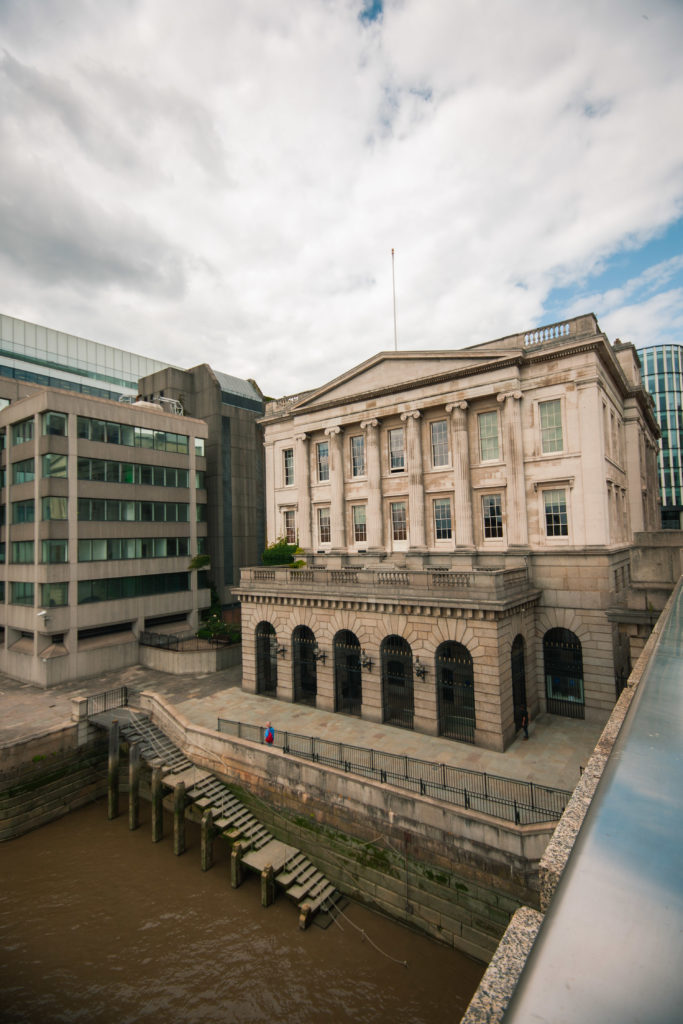
Fishmongers’ Hall, from London Bridge
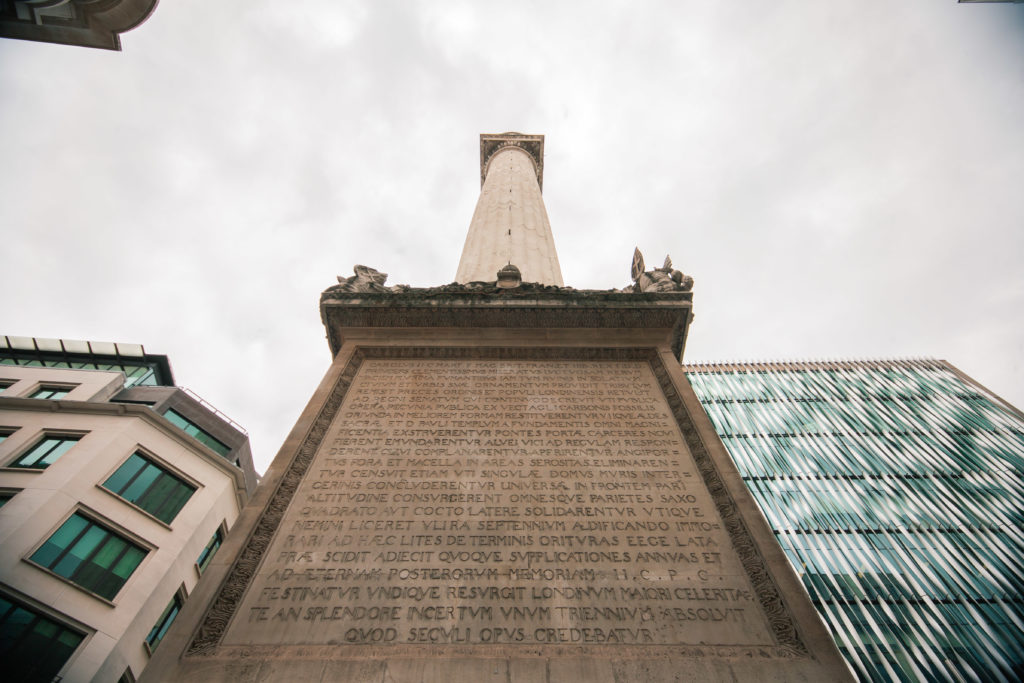
The Monument
Then note to the right of the entrance to Adelaide House a plaque celebrating London Bridge (4)
Go down the stairs by this plaque which then leads to the Thames Path. At the foot of the stairs turn right and pause to look at the views up and down river from this good vantage point. Go along Thames Path West, remembering to look up at the fine river elevation of Fishmongers’ Hall. Look in through the left hand exit gates from the Hall to see a fisherman and women cast in Coade stone. Then just to the left in the courtyard is a statue erected to the memory of James Hulbert, who died in 1724 when in office as Prime Warden to the Company and left his fortune to the Fishmongers.
At Swan Lane (5) named after the Old Swan Pub that used to be near the river front, turn right until you reach Lower and Upper Thames Street (6). Cross the road and turn right for about 100 metres. In Roman times you would have been walking along the quayside with the River Thames on your right. At Fish Street Hill turn left and you can immediately see The Monument (7). This column, which is still the tallest free-standing column in the world, commemorates the Great Fire of London and was completed in 1676 to the design of Sir Christopher Wren and Robert Hooke. A large timber plaque gives brief details of The Monument. A visit to the top is well the climb!
Turn left out of Fish Street Hill into Monument Street to look on the left for a Corporation plaque indicating the site of King William Street Underground Station, the first City Terminus of the Northern Line (8). Cross the street and proceed again up Fish Street Hill to cross Eastcheap into Gracechurch Street. You are now on the route of the Roman road northwards from London Bridge, which would eventually take you to Lincoln and York. Look out for the plaque on your right commemorating William Curtis (9), the English botanist who lived in a house on this site. Just after the plaque turn right into Talbot Court (10) to see an attractive tavern that used to be called The Talbot. The present pub set in this quiet backwater is now The Ship and has a fine internal staircase.
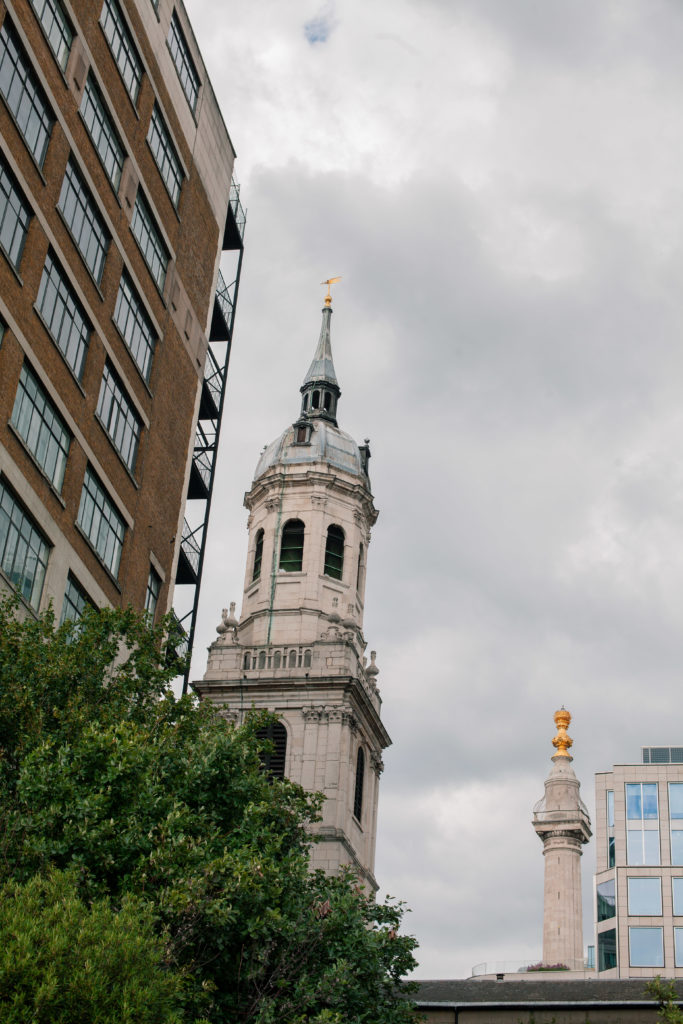
St Magnus and the Monument
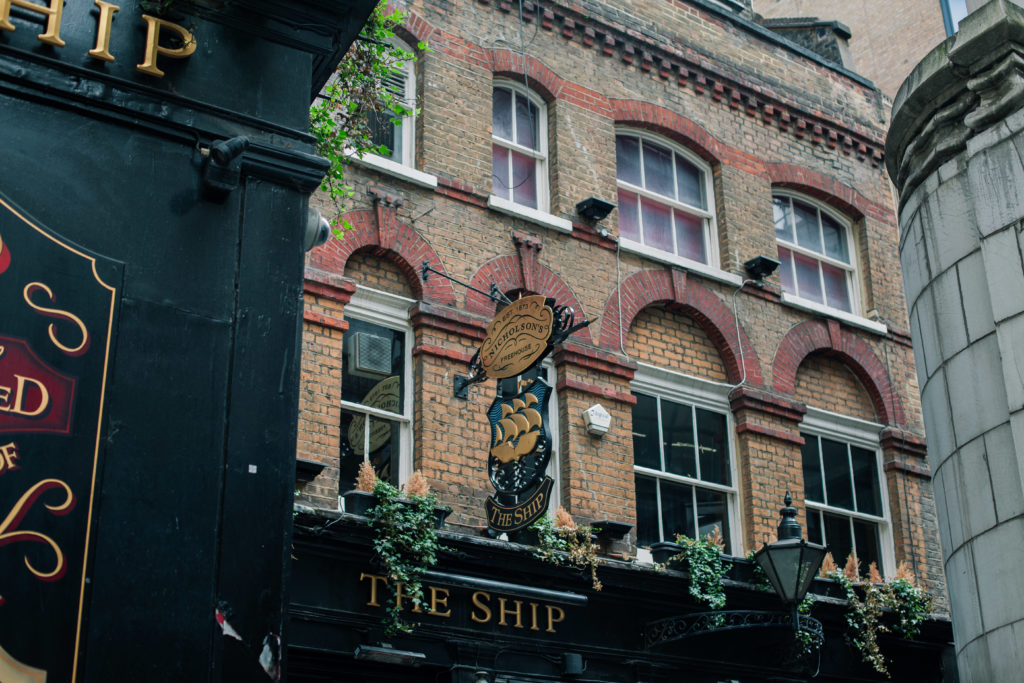
The Ship
Retrace your steps and turn right to the next courtyard on the right which is St Benet Place (11). It is a reminder of the church of St Benet Grasschurch which stood here until it was destroyed in the Great Fire.
Before turning right into Fenchurch Street, which forms the northern boundary of Bridge Ward, look north to Tower 42, which is one of the tallest buildings in the City. You are now halfway round the Ward and there is still much of interest to see. Proceed along Fenchurch Street until you reach Philpot Lane, turn right until you come to Brabant Court (12). Turn into this most attractive Court to look at No 4, a 1700’s property built by Letten. The Court has been named after a C17 proprietor called Bradbourne. Retrace your steps to Fenchurch Street and turn right into Rood Lane.
On the east side of Rood Lane stands a very large recently erected building Plantation Place (13) by the architects Arup Associates. To its south is Sir Christopher Wren’s church St Margaret Pattens (14), his only church to have a true spire which you can admire from this viewpoint in Rood Lane: if you turn about you can see it skilfully reflected in the glass fronted building in Fenchurch Street. Continue down Rood Lane until you reach Eastcheap. Here you turn right until you again come to Philpot Lane. Eastcheap was the one of the two main shopping streets in the City in mediaeval times. The other was Westcheap, now Cheapside and still a major shopping street in the City.
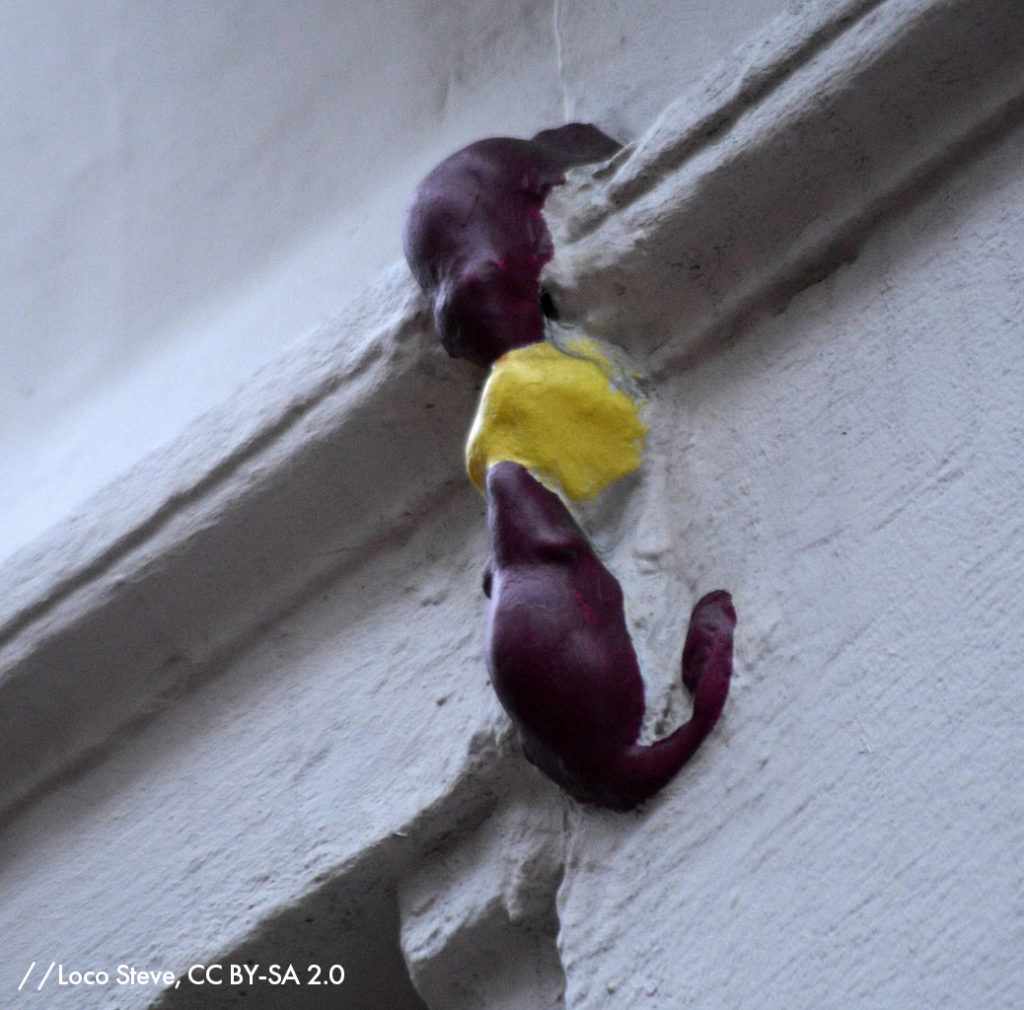
Turn right into Philpot Lane and immediately look up to your right to look for two mice eating a piece of cheese. They are about four metres above street level. The building 23 Eastcheap (15) was built in 1862 by John Young & Son as offices and warehousing for Messrs Hunt & Crombie, spice merchants. Retrace your steps, cross Eastcheap, turn left and head for Lovat Lane (16). On the corner of Eastcheap and Lovat Lane is Peek House, built in 1885 for Peek Bros, tea and coffee merchants. Look up to see an amusing relief of camels and a driver. Go down Lovat Lane which is narrow and winding with C19 granite setts and a central gutter. It is one of the most memorable lanes in the City. St Mary at Hill (17) built by Sir Christopher Wren 1670-74 is on your left. The brick tower you can see was a later addition by George Gwilt Senior in 1787-88.
At the bottom of Lovat Lane look carefully down on the right hand side for a tablet giving a description of a weathervane of a Bawley fishing boat (18) which you will see better from across the road. Turn right into Monument Street to look again at The Monument (7) before going a few steps to see on your right the former churchyard of St Botolph Billingsgate, called One Tree Park (19). Cross the road and go up the stairs onto the highwalk, remembering to look for the Bawley fishing boat. Walk along the covered pedestrian way until you reach the bridge across Lower Thames Street. From here there is a particularly good view of the tower and steeple of St Magnus the Martyr (1). Go over the bridge and straight ahead until you reach the river front. The views up and down river are very striking. Down the staircase on your right and turn back on yourself at the bottom of the stairs to face the rear of Adelaide House (2), proceed towards it and when you see the south face of St Magnus the Martyr, turn right and return to the point where you commenced this walk.
Walk compiled by the late Paul Taylor, Bridge Ward member and Past Chairman, Chartered Architect and City of London Guide Lecturer. April 2010
